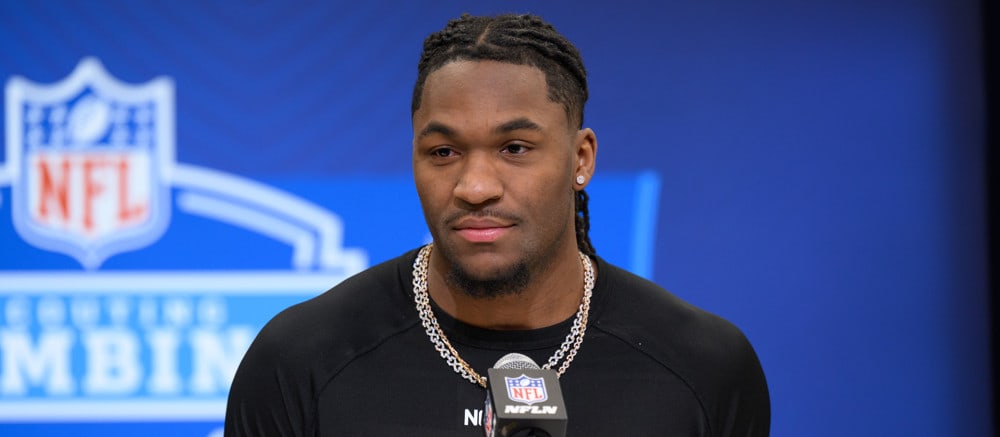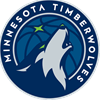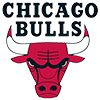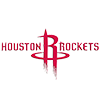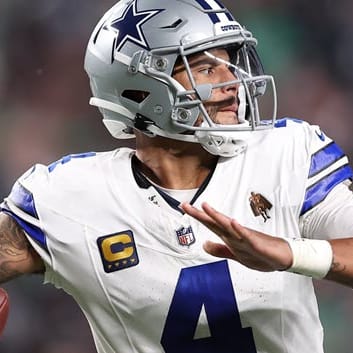This article series will look at 2025 NFL rookies and break down the full scope of their situation – their talent level and their projected opportunity – and weigh its merits against the emerging best ball ADPs of those rookies following the NFL Draft.
This article will look at Luther Burden, the Missouri wideout selected in the second round (39th overall) by the Chicago Bears. As of Sunday the ADP on Underdog listed Burden at 90.8, which is about halfway through the eighth round. It remains to be seen if Burden's ADP holds its spot in the upcoming weeks. Most agree that he's the clear third wide receiver in Chicago, so if Burden's market maintains its current position it would seem to indicate a public confidence that the Bears run a lot of three-wide sets in 2025, which might or might not happen.
Previous posts in series: Jaydon Blue (here).
SKILL SET
Skill set is pretty much the only potential question in Burden's prospect profile, because his athleticism is objectively excellent and his production was mostly good. The specific concern about Burden's skill set is whether he has or can develop enough acumen as a route runner, especially downfield, to execute a route tree befitting a standout NFL starter.
The seeming emphasis of underneath and screen passes in Burden's collegiate target sample raises the question of whether (A) he was dependent on those underneath targets out of an inability to run viable routes farther downfield,
This article series will look at 2025 NFL rookies and break down the full scope of their situation – their talent level and their projected opportunity – and weigh its merits against the emerging best ball ADPs of those rookies following the NFL Draft.
This article will look at Luther Burden, the Missouri wideout selected in the second round (39th overall) by the Chicago Bears. As of Sunday the ADP on Underdog listed Burden at 90.8, which is about halfway through the eighth round. It remains to be seen if Burden's ADP holds its spot in the upcoming weeks. Most agree that he's the clear third wide receiver in Chicago, so if Burden's market maintains its current position it would seem to indicate a public confidence that the Bears run a lot of three-wide sets in 2025, which might or might not happen.
Previous posts in series: Jaydon Blue (here).
SKILL SET
Skill set is pretty much the only potential question in Burden's prospect profile, because his athleticism is objectively excellent and his production was mostly good. The specific concern about Burden's skill set is whether he has or can develop enough acumen as a route runner, especially downfield, to execute a route tree befitting a standout NFL starter.
The seeming emphasis of underneath and screen passes in Burden's collegiate target sample raises the question of whether (A) he was dependent on those underneath targets out of an inability to run viable routes farther downfield, or if (B) he instead was used on those underneath routes by choice, be it due to Burden being uniquely good on those underneath routes or whatever other reason Missouri's offensive coordinator might have had. It's possible for both A and B to be true at once, but if only one of the two is true then it dictates a great swing in the upside potential for Burden at the NFL level.
If you only looked at Burden's 2023 true sophomore season you would sooner assume he was a top-10 pick instead of merely a top-40 one. In a year where Missouri completed 65.6 percent of their passes at 9.0 yards per attempt, Burden caught 86 of 122 targets (70.5 percent) for 1,212 yards (9.9 YPT) and nine touchdowns. That means Burden emphatically outproduced the team baseline – by 4.9 points in the completion rate and 0.9 yards per attempt – while carrying 32.3 percent of the team target volume. To draw that high of a usage share and then also outplay the team baseline in both columns before turning 20 years old is normally close to a slam-dunk predictor of at least an average future NFL starter.
Burden's 2024 introduced enough doubt that his draft stock fell by nearly a round from 2023, in large part because the big plays dried up and not much seemed left but an onslaught of screen and other low-depth targets. In his 12 games played Missouri completed 62.5 percent of its passes at 7.1 yards per attempt, so the good news is that even in his 'down' 2024 season Burden still cleared the Missouri team baseline for both completion rate (76.25) and yards per attempt (8.45).
The other concerning development was how Burden's target share dropped from 32.3 percent down to 21.6, with undrafted teammate Theo Wease largely seizing the difference. The better Wease turns out to be the better it would reflect upon Burden's 2024 numbers, but in the meantime there's no particularly good excuse for a player like Burden getting out-targeted by a player like Wease, especially when Burden's share consisted of so many easy targets compared to Wease, who played on the boundary and with fewer screens.
Particularly given the unambiguous strength of his 2023 production, it might be a little hasty to doubt Burden over his 2024 numbers. That's especially true given that his 2024 production was well above the team baseline, by a whopping 13.75 points in completion rate and 1.35 yards per attempt. Even Burden's harshest critics have to admit his 2024 production is clearly high quality even if it was disappointing. It's also worth recalling that at about 2.5 years older Wease had an experience advantage over Burden that could have played a role in Missouri's target distribution without reflecting negatively upon Burden.
Based on Burden's tape, there's no obvious reason why he can't develop into a competent downfield target in the NFL. While pretty much all of his routes were run from the slot, meaning Burden is untested with facing jams at the line of scrimmage, he shows solid if not standout tracking and does a good job of catching with his hands at the highest point. Burden seems shifty enough to evade jams effectively, but that part of his game will remain a projection for now.
How does Luther Burden stack up against the rest of the NFL? Visit our fantasy football rankings for a list of the top players for the remainder of the season.
ATHLETICISM
Luckily, there isn't much to read into when it comes to Burden's athleticism. His speed is very good in general (4.41-second 40) but especially by the standards of a 206-pound wideout.
On the field Burden demonstrates plenty of stop/start ability and frequently runs with creativity, which generally hints at standout all-around functional athleticism in addition to the straight-line variable confirmed by his 40 time. Burden appears acrobatic and easily synced up when the ball is in the air, and he tracks the ball effectively even while rapidly increasing his velocity.
Evaluate trades or get ready for a first-year draft with fantasy football dynasty rankings on RotoWire.
COMPARISON AND 2025 PROJECTION
Lofty as his ceiling might be, in the meantime there are potential structural obstacles to Burden's playing time and usage. If the current Bears roster stays healthy then there more specifically might be a crunch for playing time between Burden, Cole Kmet and Colston Loveland.
The Bears didn't spend the 10th overall pick on Loveland to back up Kmet, yet Kmet has the most snaps of any NFL tight end in the last four years and clearly belongs in a starting lineup. It's therefore a possibility that the Bears run as many or more two-tight end sets as any team in the NFL, especially with experienced blocking specialist Durham Smythe signed in free agency.
That the Bears have so much tight end personnel in 2025 is a problem for Burden in particular because that second tight end rep would occur at the expense of the slot receiver rep. Burden might not need to play the slot forever like he did at Missouri, but his only chance of ranking first on the 2025 Chicago depth chart is at the slot receiver position given that Moore and Odunze have the boundary reps locked up. If the Bears run two-TE looks at a league-leading clip and both Moore and Odunze stay healthy, then it would significantly limit Burden because his slot rep largely would not exist.
COMPARISON: The Deebo Samuel comparison was trendy for a long time, but it would be unfair since Samuel is close to one of a kind. There wasn't really a Samuel example before Samuel – maybe Percy Harvin – and in that sense Burden is also unlikely to be Samuel. More importantly, Burden is generally compared to Samuel because of how much Missouri used Burden on screen passes, which (A) isn't really how you want to make a living as a receiver and (B) isn't a full accounting of either player's skill set.
Burden is very unlikely to be a pseudo-RB at any point like Samuel was, and there's a plenty good chance Burden shows enough downfield ability that he no longer specializes in YAC setups. At 6-feet, 206 pounds with 4.41 speed Burden's better comparison would be Brandon Aiyuk.
Aiyuk was 6-feet, 205 pounds when he logged a 4.50-second combine 40, and he wasn't nearly as polished of a downfield target at Arizona State as he would eventually develop into at the NFL level. Burden has the tools to be a threat at all levels, and it could easily turn out that Burden's seeming dependence on manufactured YAC in college was simply a fluke or an arbitrary scheming decision by Missouri's coaches.
The Aiyuk comparison might be an optimistic one, but it reads more honestly than the Samuel comparison. The Samuel comparison has a subtext like, "Well, maybe Burden can't get open downfield, but if he can't then he can simply be Deebo Samuel," which is not a fair accounting of Samuel's abilities. Samuel saw more manufactured YAC opportunities than maybe any NFL receiver ever, but he absolutely got open on downfield routes, too. His usage simply trended toward the lower depths because he was so uniquely good from them, but Samuel was also a good downfield receiver that entire time.
If Burden can't develop a downfield game then the Samuel comparison doesn't hold. More realistically, if Burden can only generate YAC then the appropriate comparison would be Devin Duvernay or maybe Malachi Corley, but not Samuel. Burden's build and athletic traits are more like Aiyuk, so if Burden can demonstrate a downfield ability at some point then the comparison should click.
2025 PROJECTION AND ADP: Burden's range of the ADP (90.8) is littered with other distinguished rookie wideouts, more specifically Emeka Egbuka (93.6), Jayden Higgins (97.9) and Tre Harris (100.8). The veterans nearest by are Cooper Kupp (86.7), Darnell Mooney (87.7), Josh Downs (94.4), Michael Pittman (101.7) and Keon Coleman (108.7).
If Burden is as good as advertised and if one of Moore, Odunze or Loveland is out then Burden should pay off at this ADP in a given sample, especially if Caleb Williams take a substantial step forward in 2025. If Moore, Odunze and Loveland all stay healthy then this ADP might be a high price to pay for a player with little floor in the meantime.
With that said, there could be hard production caps on players like Mooney (space-setting WR2 type with a questionable quarterback) and the Colts duo, both of whom might be criminally limited by the Colts' quarterback room. It's easier to justify the pursuit of Burden's upside over the potentially capped wideouts like Mooney, Pittman and Downs.
In the case of Egbuka there might be reason to call it even with Burden, or even rank Egbuka ahead. Egbuka arguably faces a similar but slightly lesser logjam for playing time in Tampa Bay, because whereas Egbuka can likely jump over Jalen McMillan from Day 1, it's probably more difficult for Burden to displace Kmet or/and Loveland.
It's not easy to project Burden's route to upside as clearly players like Higgins, Harris or Coleman, each of whom is one injury away from WR1 status with an enviable quarterback. It is easy, though, to argue that all of Higgins, Harris, Coleman, Egbuka and Burden belong in the same tier.


